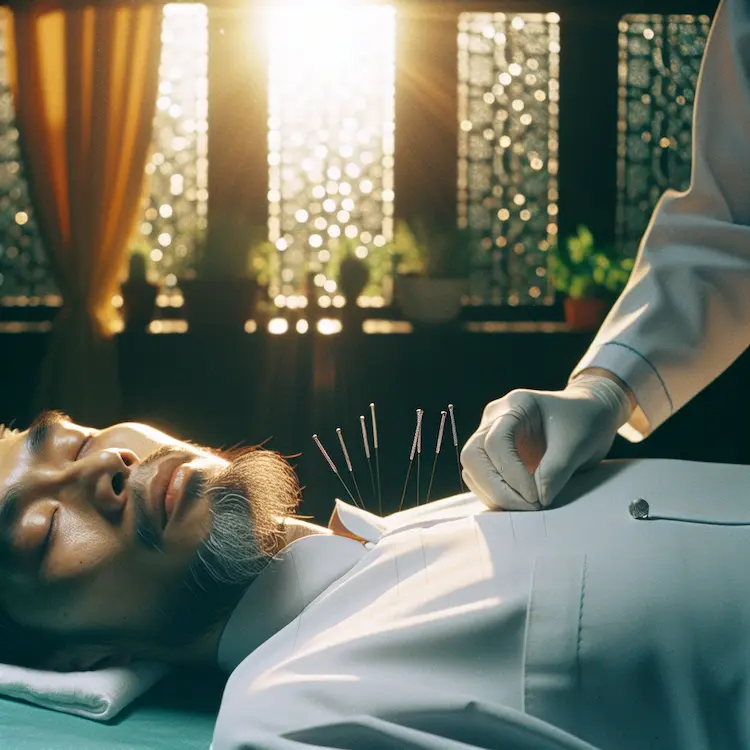Hypertension, or high blood pressure, is a significant global health concern affecting millions of people worldwide. As the medical community continues to explore alternative and complementary therapies, acupuncture has emerged as a promising intervention for managing blood pressure. This ancient Chinese practice, which involves inserting thin needles into specific points on the body, has gained attention for its potential to lower blood pressure and improve overall cardiovascular health.
Understanding Acupuncture and Its Mechanisms
Acupuncture is rooted in traditional Chinese medicine and is based on the concept of balancing the flow of energy, or “qi,” throughout the body. When applied to blood pressure management, acupuncture is believed to work through several mechanisms:
- Stress Reduction: Acupuncture stimulates the release of endorphins, which are natural “feel-good” chemicals that help reduce stress and promote relaxation.
- Improved Circulation: The insertion of needles at specific points can enhance blood flow and oxygenation throughout the body.
- Regulation of the Nervous System: Acupuncture may modulate the autonomic nervous system, which plays a crucial role in blood pressure regulation.
- Hormonal Balance: Some studies suggest that acupuncture can influence the renin-angiotensin-aldosterone system (RAAS), which is essential for blood pressure control.
Clinical Evidence and Research Findings
Recent clinical trials and meta-analyses have provided insights into the effectiveness of acupuncture for hypertension:
Acupuncture vs. Conventional Treatments
A systematic review and meta-analysis conducted in 2023 compared acupuncture to conventional drug treatments for hypertension in elderly patients. The findings were promising:
- Acupuncture-only treatment showed similar efficiency and antihypertensive effects compared to drug therapy.
- Acupuncture combined with antihypertensive drugs outperformed drug-only treatment in lowering blood pressure.
Specific Blood Pressure Reductions
A meta-analysis of randomized controlled trials revealed:
- Acupuncture reduced systolic blood pressure by an average of 0.54 standardized mean difference (SMD) compared to sham acupuncture or no treatment.
- While there was a reduction in diastolic blood pressure (SMD = 0.49), it was not statistically significant.
Long-term Effects
Research indicates that acupuncture may have lasting effects on blood pressure:
- Some studies reported blood pressure reductions lasting from 1 to 24 hours after treatment.
- Regular acupuncture sessions over 4-8 weeks have shown sustained improvements in blood pressure control.
Acupuncture Techniques for Blood Pressure Management
Several acupuncture points have been identified as particularly effective for managing hypertension:
- Liver 3 (LR3): Located on the top of the foot between the big toe and second toe.
- Heart 7 (HT7): Found on the inner wrist, in line with the little finger.
- Kidney 3 (KD3): Positioned on the inner ankle, between the ankle bone and Achilles tendon.
- Taichong Point: One of the most commonly used points for hypertension, located between the first and second metatarsal bones of the foot.
Comparison of Acupuncture with Other Hypertension Treatments
To better understand the role of acupuncture in blood pressure management, let’s compare it with other common treatments:
| Treatment | Effectiveness | Side Effects | Cost | Long-term Compliance |
|---|---|---|---|---|
| Acupuncture | Moderate to High | Minimal | Moderate | Good |
| Antihypertensive Drugs | High | Varies (can be significant) | Varies | Moderate |
| Lifestyle Changes | Moderate to High | None | Low | Challenging |
| Combination (Acupuncture + Drugs) | Very High | Reduced compared to drugs alone | High | Good |
This comparison highlights that while acupuncture may not be as immediately effective as some medications, it offers a favorable side effect profile and potentially better long-term compliance.
Practical Advice for Incorporating Acupuncture
If you’re considering acupuncture for blood pressure management:
- Consult Your Doctor: Always discuss adding acupuncture to your treatment plan with your healthcare provider.
- Find a Qualified Practitioner: Look for licensed acupuncturists with experience in treating hypertension.
- Commit to Regular Sessions: Most studies showing benefits used treatments 2-3 times per week for 4-8 weeks.
- Combine with Lifestyle Changes: Acupuncture works best when combined with a healthy diet, regular exercise, and stress management techniques.
- Monitor Your Blood Pressure: Keep track of your blood pressure readings to assess the effectiveness of the treatment.
- Be Patient: It may take several sessions before you notice significant improvements.
Potential Risks and Considerations
While acupuncture is generally considered safe, there are some considerations:
- Bleeding or Bruising: Minor bleeding or bruising at needle sites can occur.
- Infection: Although rare with sterile needles, there’s a small risk of infection.
- Interactions: Acupuncture may interact with certain medications, so inform your practitioner of all medicines you’re taking.
Conclusion
Acupuncture shows promise as a complementary therapy for managing hypertension, particularly when combined with conventional treatments. Its ability to lower blood pressure with minimal side effects makes it an attractive option for many patients, especially those experiencing side effects from medications or seeking a more holistic approach to health.
While more large-scale, high-quality studies are needed to fully establish its efficacy, the current evidence suggests that acupuncture can play a valuable role in a comprehensive blood pressure management strategy. As with any medical treatment, it’s essential to work closely with healthcare providers to determine the most appropriate approach for individual needs.



